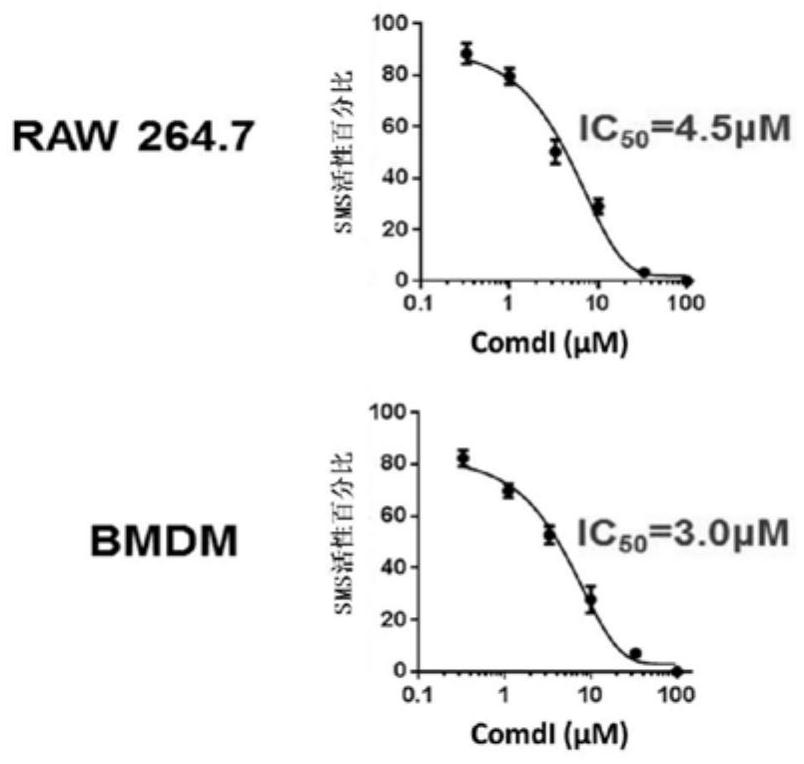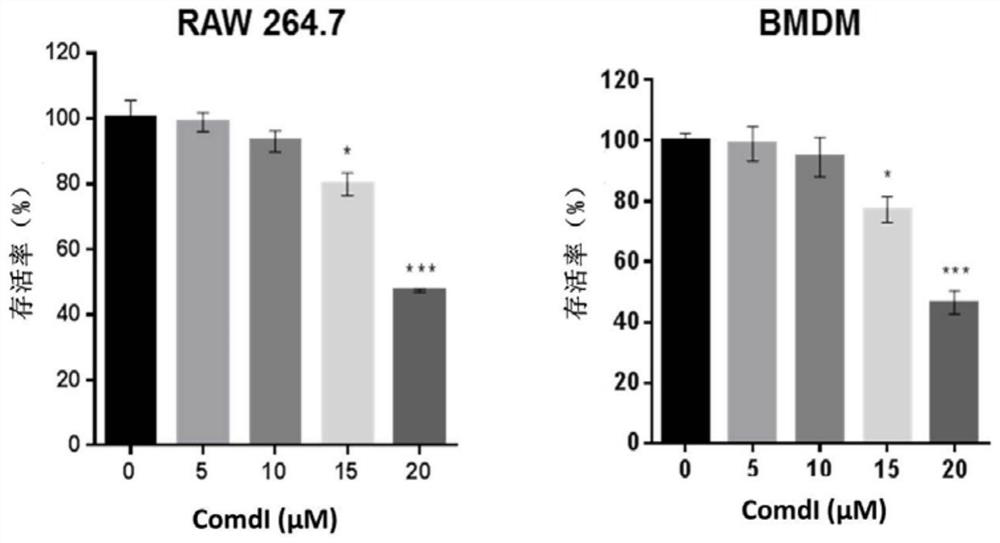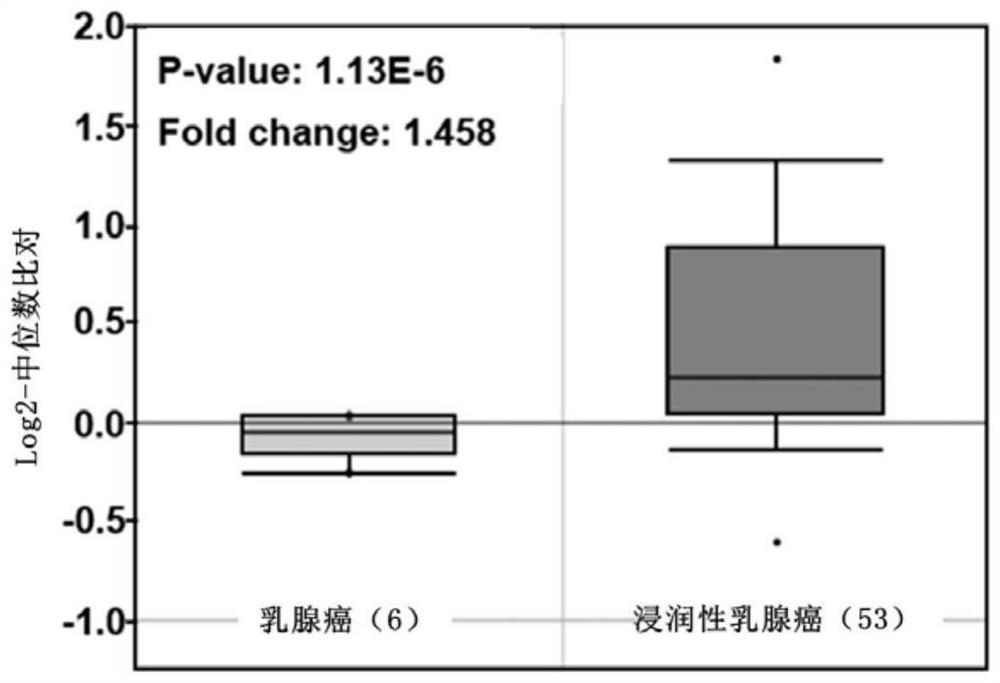Application of SMS2 inhibitor in preparation of medicine for treating highly invasive breast cancer
A highly invasive, 1.SMS2 technology, used in drug combinations, antitumor drugs, pharmaceutical formulations, etc., can solve the problem of unproven effects and achieve the effect of inhibiting highly invasive breast cancer
- Summary
- Abstract
- Description
- Claims
- Application Information
AI Technical Summary
Problems solved by technology
Method used
Image
Examples
Embodiment 1
[0046] Example 1: The experimental dose of compound I is effective and safe.
[0047] By measuring the IC of compound I (represented by ComdI in the figure) to mouse-derived macrophage cell line (RAW264.7) and primary bone marrow macrophage cell (BMDM) 50 value, determine the 3-fold half-inhibition rate (IC 50 ) concentration as the experimental dose of the present invention, this dose has significant SMS2 activity inhibitory effect on the same experimental cells (such as figure 1 shown), and the cytotoxic effect at this dose is negligible (as figure 2 Shown), therefore the dosage of compound selected in the present invention is safe and effective.
Embodiment 2
[0048] Example 2: SMS2 is highly expressed in basal-like breast cancer patients, and is positively correlated with the high infiltration of immunosuppressive cells such as M2 macrophages in cancer tissues and the poor prognosis of patients.
[0049] In order to lay the experimental foundation of the present invention, the Oncomine database (https: / / www.oncomine.org) was used to comparatively analyze the expression difference of SMS2 in breast cancer tissue and normal breast tissue; The expression in breast cancer (invisave breast carcinoma) was significantly increased (such as image 3 shown). Next, using the TCGA database (Cancer Genome Atlas N. Comprehensive molecular portraits of human breast tumors. Nature 2012; 490:61-70.), the relationship between the expression of SMS2 in 522 cases of human breast cancer and the infiltration of immunosuppressive cells in tumors was analyzed. The mRNA expression of SMS2 in the samples was sorted from high to low, and the tumor samples w...
Embodiment 3
[0051] Example 3: The loss of SMS2 activity can effectively inhibit the M2 polarization of macrophages induced by IL-4
[0052] Isolate the primary bone marrow macrophage BMDM of SMS2 gene knockout mice (KO group), and disperse the cells with 1640 complete medium containing 20ng / mL macrophage colony-stimulating factor (M-CSF) to make the final concentration 2x106 / mL. Cells were plated in 10cm dishes or 12-well plates and cultured for three days. The growth medium was replaced with fresh BMDM on the third day. After the cells were cultured for 7 days, the expression of CD11b and macrophage universal marker protein molecule F4 / 80 was detected by flow cytometry, and the formation of mature BMDM was evaluated (the conditions for inducing differentiation of BMDM in the following examples are the same). Then, the 1640 complete medium containing 20ng / mL interleukin-4 (IL-4, which is a classical macrophage type 2 polarization-inducing factor) was used to induce cell polarization fo...
PUM
 Login to View More
Login to View More Abstract
Description
Claims
Application Information
 Login to View More
Login to View More - R&D
- Intellectual Property
- Life Sciences
- Materials
- Tech Scout
- Unparalleled Data Quality
- Higher Quality Content
- 60% Fewer Hallucinations
Browse by: Latest US Patents, China's latest patents, Technical Efficacy Thesaurus, Application Domain, Technology Topic, Popular Technical Reports.
© 2025 PatSnap. All rights reserved.Legal|Privacy policy|Modern Slavery Act Transparency Statement|Sitemap|About US| Contact US: help@patsnap.com



